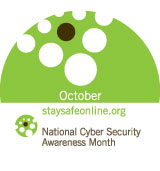Yesterday, the computer security company Panda Security released it's latest findings concerning the threat and growth of identity theft through computer malware. Their findings reveal a steep rise in the types of techniques used to steal our data and the number of infections found on computers from January, 2009 through June 2009. Panda found that 391,406 computers were found to be infected with identity theft malware -a rise of 600% compared to the same period last year.
Malicious programs such as key logger spyware can go undetected for quite a period of time, whether or not the latest antivirus updates are installed. And once these destructive programs are downloaded onto a computer, every keystroke made--including credit card numbers entered, Social Security numbers typed, banking information and passwords input--are then in the hands of the bad guys.
Panda Labs estimates that approximately three percent of all users have fallen victim to malware. These stats show that scammers have become much more tech savvy and so have their innovative methods used to get inside our computers and remain undetected for extended periods of time.
Here's an excerpt of their release:
Panda Labs receives nearly 37,000 samples of new viruses, worms, Trojans and other types of Internet threats each day. Of these, 71 percent are Trojans, mostly aimed at stealing bank details or credit card numbers, as well as passwords for other commercial services. Between January and July 2009, Panda Labs received 11 million new threats, approximately 8 million of which were Trojans. This is in clear contrast, for example, to the average of 51 percent of new Trojans that Panda Labs received in 2007.
Read their article in its entirety here.
Identity theft and the methods used to exploit business data bases continues to rise as well. Just take the news this week reporting that more than 130 million credit card and debit card numbers were stolen from Heartland Payment Systems, 7-Eleven, and Hannaford Brothers. According to prosecutors, Albert Gonzalez and his two Russian co-conspirators hacked into these corporate computer networks, secretly placed "malware," or malicious software on their networks and stole unsuspecting consumers credit and debit card information.
See an earlier blog: Identity Thieves may be hiding inside your computer.

 NEWSLETTER SIGN UP
NEWSLETTER SIGN UP SUBSCRIBE
SUBSCRIBE CONTACT
CONTACT

















One of the best ways to fight this is to update and scan with malware and spybot tools. I run the applications 2x a day. Always keep the pop-up blocker on as well. - Mike